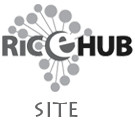- Introduction
- Executive Summary
- The Goronyo Rice Innovation Platform
- Rice Production and Productivity in Goronyo
- Rice Post-harvest, Processing and Marketing in Groronyo
- Rice husk utilization
- Training Materials
- Technical drawings of locally fabricated equipment and stoves
- Value Chain Research in Goronyo
- Experience from other hubs
This annual report highlights the progress made during the period of November 2017 to August 2021. During the reporting period, activities carried out contributed to 20 deliverables under the 5 components of the research project. The project determined that farmers and other value-chain actors were willing to organize themselves to improve value-chain functioning, and consequently established the Goronyo Rice Innovation Platform to introduce and market high-quality parboiled and paddy rice. The platform brings together farmers, microfinance institutions, seed suppliers, agro-input dealers, production advisers, millers, aggregators/marketers, parboilers, consumers, equipment fabricators and policy makers, enabling the formation of cross-group (vertical) and within-group (horizontal) linkages for efficient working.
As part of the product upgrading, varieties expected to replace FARO 44, a commonly grown variety in MRVIS, were screened both by farmers and scientists for agronomic and grain quality traits and further compared with imported brands in the Nigerian market. Two varieties; Dangote and Sahel 134 showed similar yield level to FARO44. Sahel 134 had 10 days shorter to heading than FARO44 and Dangote. Dangote had similar grain quality traits to imported rice from Thailand, whereas Sahel 134 had similar grain quality traits to FARO44. Dangote and Sahel 134 were identified as promising varieties for increasing the marketability and genetic diversity of rice in this region. Service providers and extension agents were trained to provide Good Agricultural Practice (GAP) and RiceAdvice (fertilizer) recommendations to farmers. The average RiceAdvice yield was 7.4 t/ha while the average expected yield was 7.7 t/ha. This result shows that expected yield is like to RiceAdvice actual yield from demonstration trials in farmer’s fields. Service providers and Extension agents then proceeded to train 800 farmers on how to apply GAP and RiceAdvice to produce quality paddy using farmer’s Field Schools. Farmers testified during monitoring visits by that the implementation of the recommendation resulted in yield increase from 3t/ha to about 7-8t/ha. These testimonies agree with data collected from RiceAdvice demonstration trials.
To give the new innovation platform a solid start, the project established a processing facility following the pattern of other innovation platforms. A building donated by the Sokoto Rima River Basin Development Authority was Renovated to host the rice processing facility The facility comprises ‘ASI’ thresher–cleaner, Satake SB10 mill, destoner, rice grader, GEM and mini-GEM parboiling equipment, drying and storage space, and a borehole for clean water. The innovation platform–facility has been registered at the Corporate Affairs Commission of the Federal Republic of Nigeria as The Goronyo Rice Processing Ventures, with 130 members and initial capital of $1538. Since its establishment, the innovation platform has processed around 23 tonnes of paddy each month, generating $3800 revenue and $584 profit. A complete switch from wood to rice husk as fuel saves an estimated $30–40 per tonne of rice that would otherwise be spent on wood. A training of 100 end-users on how to use the facility to produce quality rice was completed. Trainer key actors are now the trainers of other actors in future trainings hosted by the facility. This capacity building exercise coupled with improved technologies was intended to contribute to process upgrading. The Goronyo Rice Processing facility was officially commissioned on 3rd October, 2020 by the Representative of the National Project Coordinator TRIMING Project (Mr. Hallai Garba) in the presence of the Director of NCRI (Dr. Aliyu Umar), the Representative of the Director of AfricaRice (Dr. Nwilene Francis), Members of the Research Panel of Experts (RPoEs) Representatives of the Research team, traditional and political leaders and value chain actors. A total of 164 people participated in the event.
Before the AfricaRice-TRIMING project, farmers mostly sold paddy to aggregators and processed rice only for home consumption. However, with the introduction of the Goronyo rice processing facility, there are opportunities for farmers to market both paddy and milled rice for consumers in Goronyo and beyond, thus contributing to channel upgrading.
The introduction of rice husk as a source of energy for parboiling and household cooking opens new opportunities for exploiting the underutilized rice milling by-product and reducing the pressure on forest resources. The installation of the rice husk gasifier stoves benefited 291 persons in 10 households in Goronyo. The installation allowed each household to use rice husk as cooking fuel and access to solar electricity for household lighting and charging of mobile phones. This activity is contributing to intersectoral upgrading.
Three manuscripts supported by work from this project were prepared. One of the papers is in published (Rice Science), one has been submitted to the Journal of Agricultural and Applied Economics while one has been submitted to TRIMING to be included in the TRIMING Project book of reading. Reports from University supervisors of students indicated that the two M.Sc. students and a PhD student have completed their studies.
The project was implemented in collaboration with the National Cereals Research Institute (NCRI) and Usmanu Danfodiyo University Sokoto (UDUS) with whom three Sub-contract agreements and one Letter of agreement were signed respectively.













